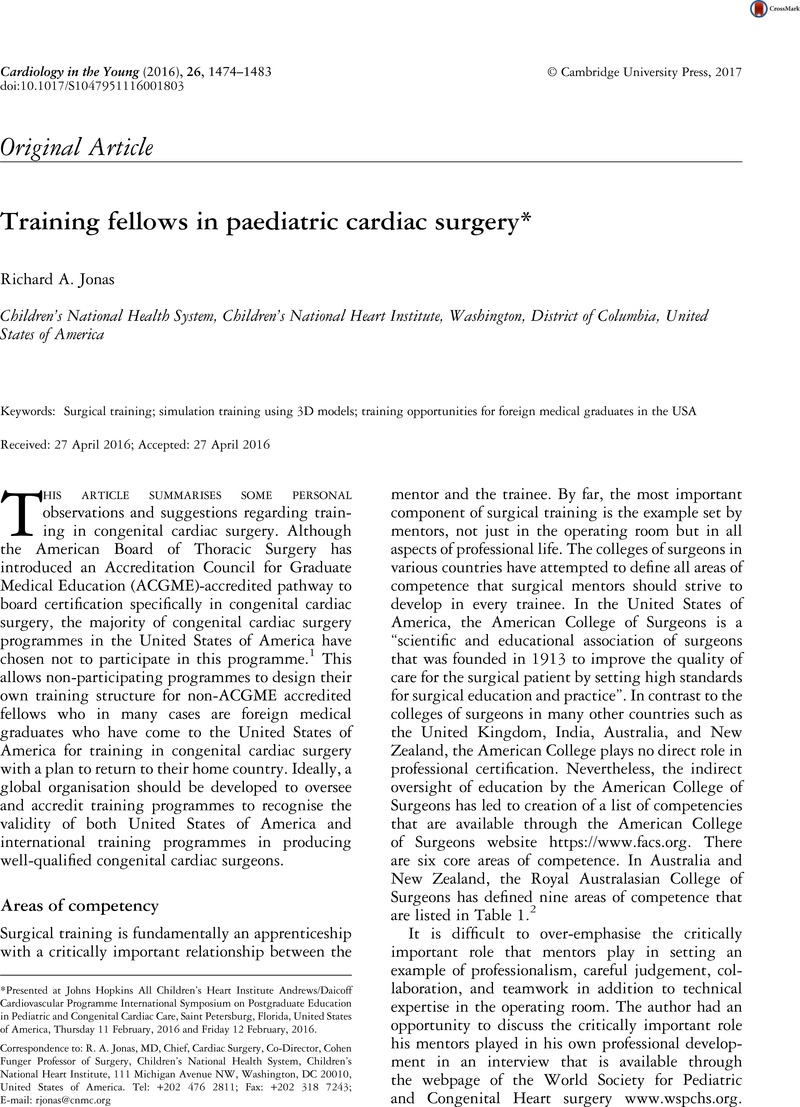Crossref Citations
This article has been cited by the following publications. This list is generated based on data provided by Crossref.
Biglino, Giovanni
Moharem-Elgamal, Sarah
Lee, Matthew
Tulloh, Robert
and
Caputo, Massimo
2017.
The Perception of a Three-Dimensional-Printed Heart Model from the Perspective of Different Stakeholders: A Complex Case of Truncus Arteriosus.
Frontiers in Pediatrics,
Vol. 5,
Issue. ,
Anwar, Shafkat
Singh, Gautam K.
Miller, Jacob
Sharma, Monica
Manning, Peter
Billadello, Joseph J.
Eghtesady, Pirooz
and
Woodard, Pamela K.
2018.
3D Printing is a Transformative Technology in Congenital Heart Disease.
JACC: Basic to Translational Science,
Vol. 3,
Issue. 2,
p.
294.
Gardin, Chiara
Ferroni, Letizia
Latremouille, Christian
Chachques, Juan Carlos
Mitrečić, Dinko
and
Zavan, Barbara
2020.
Recent Applications of Three Dimensional Printing in Cardiovascular Medicine.
Cells,
Vol. 9,
Issue. 3,
p.
742.
Hopfner, Carina
Jakob, Andre
Tengler, Anja
Grab, Maximilian
Thierfelder, Nikolaus
Brunner, Barbara
Thierij, Alisa
and
Haas, Nikolaus A.
2021.
Design and 3D printing of variant pediatric heart models for training based on a single patient scan.
3D Printing in Medicine,
Vol. 7,
Issue. 1,
Lotto, Robyn R
Seaton, Sarah E
Jones, Ian D
and
Lotto, Attilio A
2022.
A qualitative study exploring risk perception in congenital cardiac surgery: the perspective of UK surgeons.
Cardiology in the Young,
Vol. 32,
Issue. 2,
p.
208.
Bhanakar, Ujwala
Pal, Amit Kumar
and
Ray, Biswabina
2022.
Three-dimensional (3D) printing: A potentially versatile tool in the field of medicine.
Indian Journal of Clinical Anatomy and Physiology,
Vol. 9,
Issue. 2,
p.
78.
Yoo, Shi-Joon
Hussein, Nabil
and
Barron, David J.
2022.
Congenital Heart Surgery Skill Training Using Simulation Models: Not an Option but a Necessity.
Journal of Korean Medical Science,
Vol. 37,
Issue. 38,



